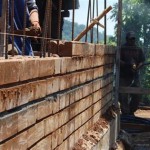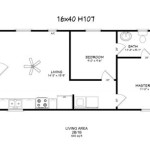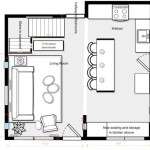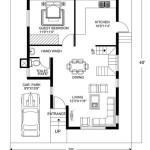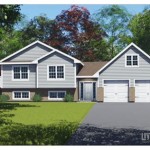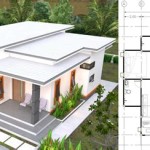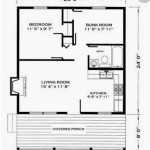Small Contemporary Mountain House Plans: Design, Functionality, and Inspiration
The allure of mountain living, with its breathtaking vistas and tranquil atmosphere, continues to draw individuals seeking respite from the hustle and bustle of urban life. However, the dream of owning a mountain retreat doesn’t always necessitate a sprawling estate. Small contemporary mountain house plans offer a compelling alternative, providing a harmonious blend of modern design, efficient space utilization, and seamless integration with the natural surroundings. These plans prioritize functionality and aesthetics, creating comfortable and stylish environments that maximize the enjoyment of mountain living without overwhelming the landscape.
Contemporary mountain house plans are characterized by clean lines, minimalist aesthetics, and an emphasis on natural light. They often incorporate sustainable building practices and materials, reflecting a commitment to environmental responsibility. The "small" adjective further refines these designs, focusing on compact footprints that minimize construction costs and environmental impact, while still offering ample living space for individuals, couples, or small families. This article explores the key considerations in selecting and implementing small contemporary mountain house plans, touching on design elements, functional aspects, and inspirational examples.
Maximizing Space and Functionality in Small Mountain Homes
One of the primary challenges in designing a small mountain house is maximizing the available space without compromising functionality or comfort. This requires careful planning and innovative design solutions. Open floor plans are a common feature, creating a sense of spaciousness and allowing for flexible use of living areas. Combining the living room, dining area, and kitchen into a single, unified space eliminates unnecessary walls and maximizes natural light penetration.
Strategic storage solutions are crucial for minimizing clutter and maximizing usable space. Built-in shelving, custom cabinetry, and hidden storage compartments can seamlessly integrate into the design, providing ample storage without sacrificing aesthetics. Loft spaces can also be incorporated to create additional sleeping areas, home offices, or storage areas, effectively utilizing vertical space. Multi-functional furniture, such as sofa beds and nesting tables, can further enhance space efficiency.
The connection to the outdoors is also vital for small mountain homes. Large windows and sliding glass doors not only provide stunning views but also allow natural light to flood the interior, making the space feel larger and more inviting. Decks and patios extend the living space outdoors, creating areas for relaxation, dining, and entertaining. Orientation of the home to maximize natural light and passive solar gain can also significantly impact energy efficiency and overall comfort.
Consideration should be given to the specific activities that will take place within the home. If the homeowners are avid skiers, for example, a dedicated mudroom or gear storage area will be essential. If they enjoy entertaining, a well-equipped kitchen and comfortable outdoor seating area will be priorities. Thoughtful planning that anticipates the homeowners' needs and lifestyle will result in a small mountain home that is both functional and enjoyable.
Key Design Elements of Contemporary Mountain Houses
Contemporary mountain house design blends modern aesthetics with rustic elements, creating a unique and sophisticated look. Clean lines and minimalist forms are contrasted with natural materials like wood and stone, creating a warm and inviting atmosphere. The use of large windows and sliding glass doors is also a defining characteristic, providing panoramic views and blurring the boundaries between indoor and outdoor living.
Material selection plays a crucial role in achieving the desired aesthetic. Natural wood siding, stone accents, and metal roofing are common choices that complement the surrounding landscape. Inside, exposed beams, wooden floors, and stone fireplaces add to the rustic charm. The color palette typically consists of neutral tones, such as grays, browns, and whites, which create a calming and serene environment. Pops of color can be introduced through artwork, textiles, and accessories.
Roof design is another important consideration. Gable roofs are a classic choice for mountain homes, providing protection from the elements and creating a sense of height. Shed roofs, with their single sloping plane, offer a more contemporary look and can be used to create dramatic overhangs that protect the house from sun and rain. Green roofs, which are covered with vegetation, offer environmental benefits and can blend seamlessly with the surrounding landscape. The choice of roof design will depend on the specific site conditions, architectural style, and the homeowners' preferences.
Interior design elements should also reflect the contemporary mountain aesthetic. Minimalist furniture, clean lines, and natural textures are key. Open shelving and floating vanities can create a sense of spaciousness, while strategically placed lighting can enhance the ambiance. The use of natural materials, such as wood, stone, and leather, can add warmth and texture to the space. The overall design should be cohesive and harmonious, creating a comfortable and inviting environment that reflects the beauty of the surrounding mountains.
Sustainability and Environmental Considerations
Sustainability is an increasingly important consideration in contemporary mountain house design. Given the sensitive nature of mountain environments, it is essential to minimize the environmental impact of construction and operation. This can be achieved through a variety of strategies, including the use of sustainable materials, energy-efficient design, and water conservation measures.
Sustainable materials, such as reclaimed wood, recycled metal, and locally sourced stone, can reduce the environmental footprint of construction. These materials often have a lower embodied energy than conventional materials and can help to preserve natural resources. Energy-efficient design involves optimizing the building's orientation, insulation, and ventilation to minimize energy consumption. Passive solar heating and cooling, which utilize natural sunlight and airflow, can significantly reduce the need for mechanical heating and cooling systems.
Water conservation measures are also crucial in mountain environments, where water resources may be limited. Low-flow fixtures, rainwater harvesting systems, and greywater recycling can help to reduce water consumption. Landscaping with native plants can also minimize the need for irrigation. Careful site planning is essential to minimize erosion and protect water quality.
Beyond materials and energy efficiency, consider the overall impact of the house on the surrounding ecosystem. Minimizing the building's footprint, preserving existing vegetation, and avoiding disturbance of sensitive habitats are all important considerations. Sustainable building practices not only protect the environment but also contribute to the long-term value and enjoyment of the mountain home.
The integration of smart home technology can also contribute to sustainability efforts. Smart thermostats, lighting controls, and energy monitoring systems can help to optimize energy consumption and reduce waste. These technologies can also provide homeowners with valuable insights into their energy usage, allowing them to make informed decisions about how to conserve resources.
Small contemporary mountain house plans represent a growing trend toward more sustainable and efficient mountain living. By carefully considering the design, functionality, and environmental impact of these plans, homeowners can create beautiful and comfortable spaces that harmonize with the natural surroundings.
Careful attention must be paid to local building codes and regulations, particularly those related to environmental protection and fire safety. Mountain areas often have specific requirements for construction, including restrictions on building height, setbacks from waterways, and fire-resistant materials. It is essential to consult with local authorities and obtain all necessary permits before beginning construction.
Engaging a qualified architect or designer with experience in mountain home design is crucial for ensuring a successful project. These professionals can provide valuable guidance on site selection, design optimization, and compliance with local regulations. They can also help to navigate the challenges of building in a mountain environment, such as steep slopes, limited access, and extreme weather conditions.
Finally, remember that a small contemporary mountain house is not just a building; it is a reflection of the homeowners' values and lifestyle. The design should be personalized to meet their specific needs and preferences, creating a space that is both functional and inspiring. By embracing sustainable practices and thoughtful design, homeowners can create mountain retreats that are both beautiful and environmentally responsible.

Small Mountain House Plans Houseplans Blog Com

Mountain Modern Exterior Google Search House Design Small Lake Houses

Pin By Shane Animas On My Next House Mountain Design Exterior Plans

Small Modern Mountain House Plans 53c Craftsman Exterior

Inspiring Modern Mountain Houses

Mountain Home Exterior Rustic House Design

Mountain House Plans Designs Bringing The Outdoors Home Design Evolutions Inc Ga

Mountain Cabin Small House Swoon Tiny Homes

Mountain Home Plans From House

Wonderful 1000 Ideas About Small Modern House Plans On Cottage At Base Of Squak Mountain W Cabin Design

